My experience on the Faroe Islands was so mixed, that I find it hard to answer the question: Will I return? On the positive side, there is the stunning drama of the landscape, where nature’s fury seems exhilaratingly evident – in the steep slopes, the impossibly jagged peaks, the vertiginously high cliffs. All the angles are acute, declivities extreme. The grass is green, the villages picturesque (mostly), and the sea – even on a grumpy day – an alluring shade of blue.

So why would I not return? I felt like I was part of William Blake’s poem, The Garden of Love, where “Thou Shalt Not” was writ over the door of where he wanted to play. Every mountain I wanted to climb, it seemed, was on someone’s private land. I either had to sneak on, like a fugitive, or pay between $50 and $110 for the privilege of walking a few hundred metres across the land to be able to start climbing. I don’t enjoy feeling unwelcome, and even less do I favour feeling like a felon. They don’t seem to have heard of the notion of “National Park” where you save something beautiful for all the people to enjoy, or of the wonderful English Right to Roam, where you access high land through established rights of way, and have freedom to roam above a certain height. Oh how I adore that system!!!!!!!! But what we have, and palpably feel, on the Faroe Islands, is a huge tension between the broader Tourist Industry, which desperately wants our presence (well, our money will do), and the farmers, who equally desperately, do not.

Now, I have no problem with the farmers not wanting us there. It is their land, and their right not to have us on it, and not to want their country overfilled with idiotic, rubbish-dumping, disrespectful tourists. I totally get it. I also get it that they don’t want signs in a foreign language and they don’t want to have to alter their own beautiful customs to accommodate ridiculous tourists who can’t leave home without demanding to have their own habits infiltrating a foreign place – a kind of culture conquest. The Faroese quite rightly want to be who they are, thanks very much. So what’s the problem? The problem is that the tourist industry lures us there, but then farmers implicitly tell us we’re not welcome. The tourist industry’s representatives and the farmers need to sort out their tensions and come to some kind of resolution so that travellers are not caught as pawns in this battle zone. When I was there, farmers had worked out that they could get rich faster than a charging cheetah by requiring each tourist to pay $50 to cross their land. Like many others, I paid, as I’d gone to the trouble of being there, but I felt we’d crossed from “culling the number of tourists” to downright greed.

Funnily, I even totally agree with the concept of culling numbers by charging high prices (they do that on Lord Howe Island, with great success) – I just don’t like naked greed, and that’s what I witnessed on the Faroe Islands. Also, the situation we confronted in 2019 contradicted what we had been told: “There is only one hike on these islands that costs money”. Bunkum!!!! I don’t enjoy misrepresentation and deceit.

I’m afraid that every tourist I spoke to was feeling ‘used’, and unwanted. Some laughed about it; some were angry; others, just philosophical, but all felt it. It wasn’t so much about the money, as the feeling we had of being unwelcome and bled dry. For example, my first night’s accommodation (in Bour, Vagar Island), I paid $375 (just for me), and yet slept on the couch in my own sleeping bag, as the bedroom didn’t fit me as well as the bed; it had no windows to speak of; the cheap, synthetic duvet was too heavy to tolerate; and the fabric of the sheets was abrasive. There was no milk in the fridge, or anything helpful. The shower grew mould like a Tassie tree grows lichen. I had packet soup for dinner, as all shops were closed (Sunday) and there was nothing to let me know I was welcome in my little bothy. (In fact, I stood for over ten minutes in the rain trying to work out how on earth to get in. I was not welcomed by the host.) I had dried biscuits and my own coffee for breakfast, there being nothing else available. I kept telling myself: “You’re paying for the view, Louise”, and staring out the window. The view was certainly dramatic and amazingly beautiful, but is that enough?

I had to use my own sleeping bag on three of my seven nights. It would have been four, but I cleared out of one place I’d paid for, and just paid double to be somewhere nice on my final night. I wanted to finish on a good note, and I’m so glad I did.

That’s a lot of negatives, so let’s not forget that I’m still undecided on the topic of a possible return. In fact, even given the above, I probably will go back – just like a woman is able to kind of forget the pain of childbirth and turn up for baby number two. The joy of the birth outweighs the pain of the process. So, having warned you that life on the Faroes is not all candy and cream, I can proceed in gushes and gahs about the beauty. (Actually, I have NEVER seen so much candy in my whole life; I was truly amazed. Unfortunately, I wanted, and couldn’t find, something nutritious and tasty to eat). Apart from playing inept criminal in the local saga, I really did enjoy myself, and every single fellow traveller I met was extremely nice.

On the first day (having survived my opening night on the couch), I set out for the famous Mulafossar (pictured) and was not at all disappointed. The sun even gave me a gorgeous shaft of gold, stage-lighting the village of Gásadalur above. That was a good start. I felt almost appeased. I felt very much so when I arrived at my accommodation for the next night in Midvagur (Ingis Guest House) very early indeed (before lunch) – I was actually just checking out what it looked like, knowing that places don’t like you checking in so early, but this place had an owner who was visible and who saw me and made me perfectly welcome. The place was as roomy and comfortable as the other one wasn’t.

That afternoon, I went to inspect my second waterfall, Bøsdalafossur, and the famous cliffs nearby, Trælanípa. And thus began the game of farmers deciding to whack on huge charges. I wanted to see, so I paid. But I wanted my money’s worth, so climbed a few extra mountains alongside, and neither asked about, nor cared, whose land they were on … and then felt guilty for climbing mountains. Oh dear. And now, from the safety of home, I am angry that I didn’t climb more. There were others I wanted to climb, but felt uncomfortable and cleared out, and now regret it. There’s no point in reading blogs written in previous years about climbing this and that, as things were different then. I wanted to go back for a sunset or sunrise photo, but the farmer said the $50 was for one visit only!

My next day, day 2, I had tried to book a ferry to go to Mykines and see the puffins. But the booking was all in Faroese, and very confusing. I and three other couples managed to book in the opposite direction to the one we wanted, and thus weren’t booked at all. Anyway, by a stroke of luck, I did manage to get onto the ferry, and had an enjoyable trip across. By the time I arrived, however, I was a little block of ice, so thought I’d have a coffee in the cafe the island was supposed to have. I couldn’t find one anywhere. I eventually found someone to ask, and she said I was right outside it. It doesn’t have a sign. Coffee, cake and fish soup were wonderful, and I was then defrosted enough to begin the walk. It was very short indeed, but also cost $50. Everyone was there for the puffins, but the signs told us we had to march purposefully past the puffin area, and we were not to stop or even slow down. To my relief, I saw everyone disobeying, but, again, I felt terribly naughty for looking at what I’d come to see – and paid for. In Iceland, we were allowed to stare and photograph to our hearts’ content. Nobody hurt or endangered these birds. We were all staring because we love them. I didn’t witness any bird suicide due to human invasion. Right at the end, the day’s gang of tourists had all gone back, and puffins and I enjoyed just being there on the hillside. I watched the partner come in from a day at the office, tell his wife what he’d been up to; she offered a few remarks, and off he flitted again, to be repeated many times over.


On Day 3, I had booked to go on a hike with a guide. No. I did NOT need or want a guide, but this farmer insisted. Cost $110. This guide was hilarious. He turned up in his slippers and track pants, while we, the eager hikers, were assembled with boots, packs and stocks (those who use them). We had to wait a bit, but were then allowed to begin. I was up the front with the eager beavers, wanting to get as far as possible for my money, and especially wanting to arrive at our goal before the midday glare ruined it. I actually wanted to see it at sunset, but this was not allowed. There were three of us with tripods, and he agreed we could go to the end alone. Two of us did. I arrived, photographed a bit and some more, and was eating lunch when the rest turned up.

“Did he say we’d eat here?”, I asked.
“He says nothing to anyone”, they said. Oh. I thought it was just me.
The others decided to eat lunch too. Our “guide” turned up, and played on his phone, ticking boxes while we chatted to each other.
He spoke to us to tell us it was time to turn for home. (The info said it was a six hour walk. We’d been walking for 1 hr 10 mins. I didn’t feel I’d had my money’s worth.)
On the way back, one of the poor Chinese got dive-bombed by a vicious attacking brown sea bird. He lay on the ground petrified. Who rescued him and taught him how to deal with these birds? Our guide? No. You guessed. Me.
I felt ripped off by the mismatch between $110 and what we’d received, and was longingly eying up nearby mountains. Damn this farmer. I’d paid to be on his land. I was jolly well going to get more than this, so I told the “guide” I was going to climb that one there, and turned around and went. He couldn’t call me back, as he’d never bothered to ask any of us our names. On Lord Howe Island, I had to have a guide I didn’t want, but he was highly educated, with a university degree in environmental science, and spoke interestingly on various issues of the island. He was also friendly and helpful. (Same price).
I had great views up there on my naughty mountain, and felt more peaceful on my return.

The following day (day 5) I had to head north, and decided this would be the day I climbed Villingadasfjall, quite high and dramatic. It was recommended not to do this in the mist. My mist was as thick as quick mud, but off I set, past the collection box, and up the gooey slope into the palpable gloom. The maker of the track did not waste time with zigs and zags, which meant the slip factor was pretty extreme. I witnessed one descender damage his coxis with a bang. There will be problems in the future. It felt a bit eerie up there for some reason – perhaps because of the dire warnings against doing exactly what I was doing, so I saw my summit and retreated quickly. It rained lightly most of the day, and the wind was not gentle. This was as far north as I got. The fjall is the third highest on the Faroes, and the view is supposedly brilliant. Another time I can try for the view. It felt nice to have had a good workout.

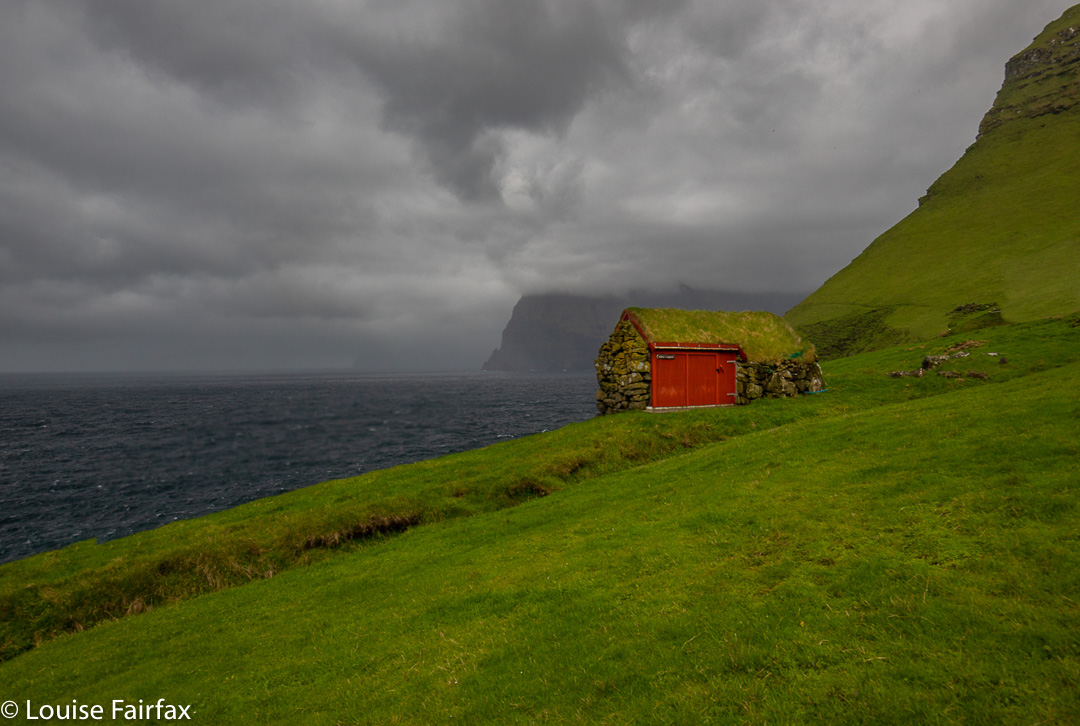
On day 6 of my visit, I had chosen to take a ferry to Kalsoy to see the famous lighthouse there. I loved this island, and don’t even remember being asked to pay money – but maybe that’s because the rain was bucketing oceans and no tax collectors wanted to brave such conditions. I knew it was due to clear around 2pm (briefly), but needed the early ferry to be sure of getting there. I was armed with a book, and read for four hours at one village, and then two more hours at Syðradalur waiting for the promised break. My friend Goncales from the famous guided hike was there, so when the break finally came, we dashed up to the lighthouse (27 mins), photographed with squeaks of excitement at the beauty we were witnessing for 45 mins, came back in about 25, and closed the car door as the rains returned.
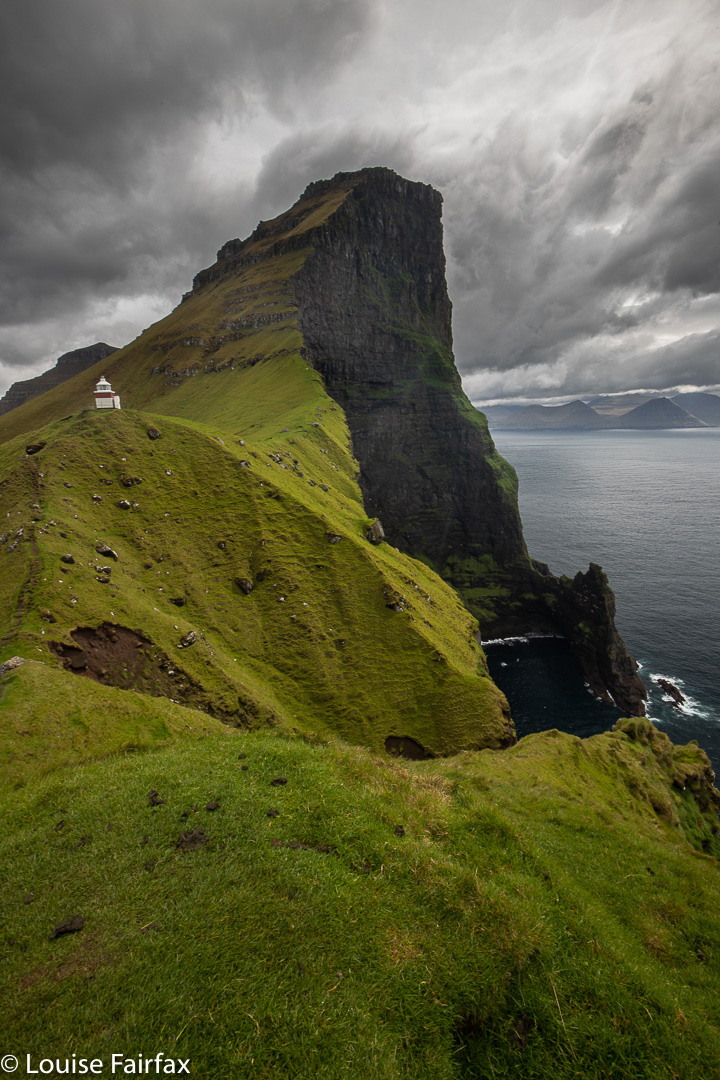
My accommodation that night was at a village I didn’t like (Vestmanna) at a place that I liked even less than the village (yet another use-my-own-sleeping bag but pay-big-money place). Yet again, for love of money, I could not find one single thing in the supermarket I felt like eating, so settled yet again for packet soup for dinner. Next morning, I decided I just could not bear to be there for the next – my final – night, so cleared out (I’d paid for two, so this was money in the bin, but worth it).
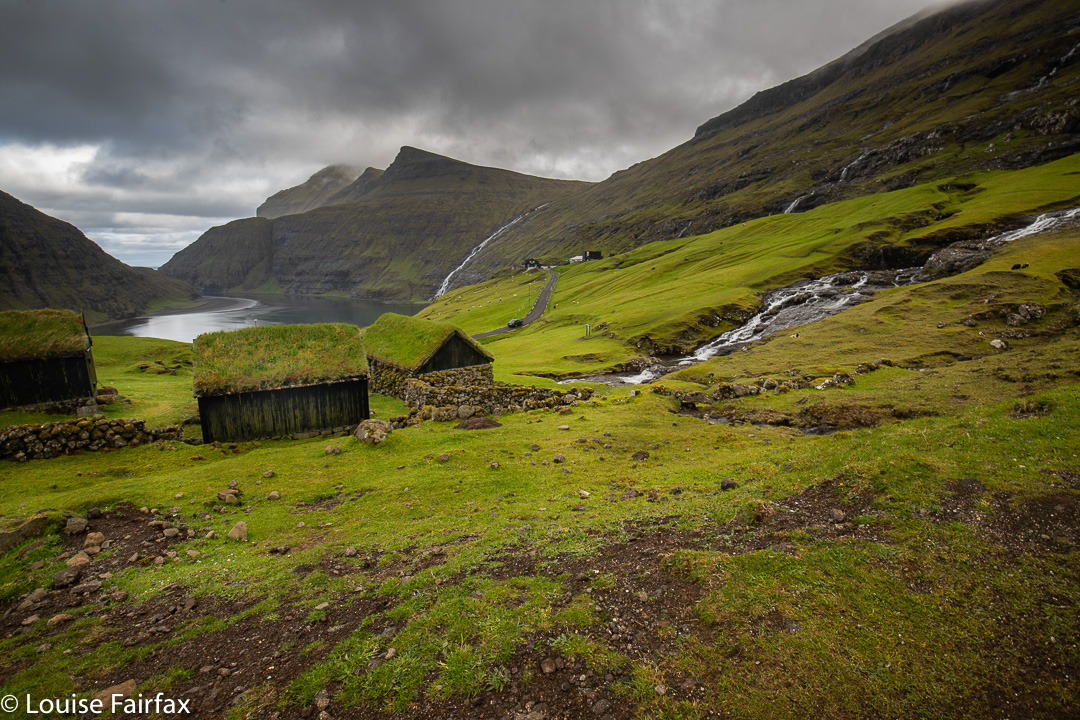
The last day involved a visit to Saksun, but I felt the dislike of tourists and left. Others did the same. A smoking guard stood over me while I had my brief wander. I wanted to climb the highest mountain on the islands, Slættaratindur, but I couldn’t even see as far as the back of the car, and wasn’t in the mood for that, so proceeded further to the village of Gjogv.
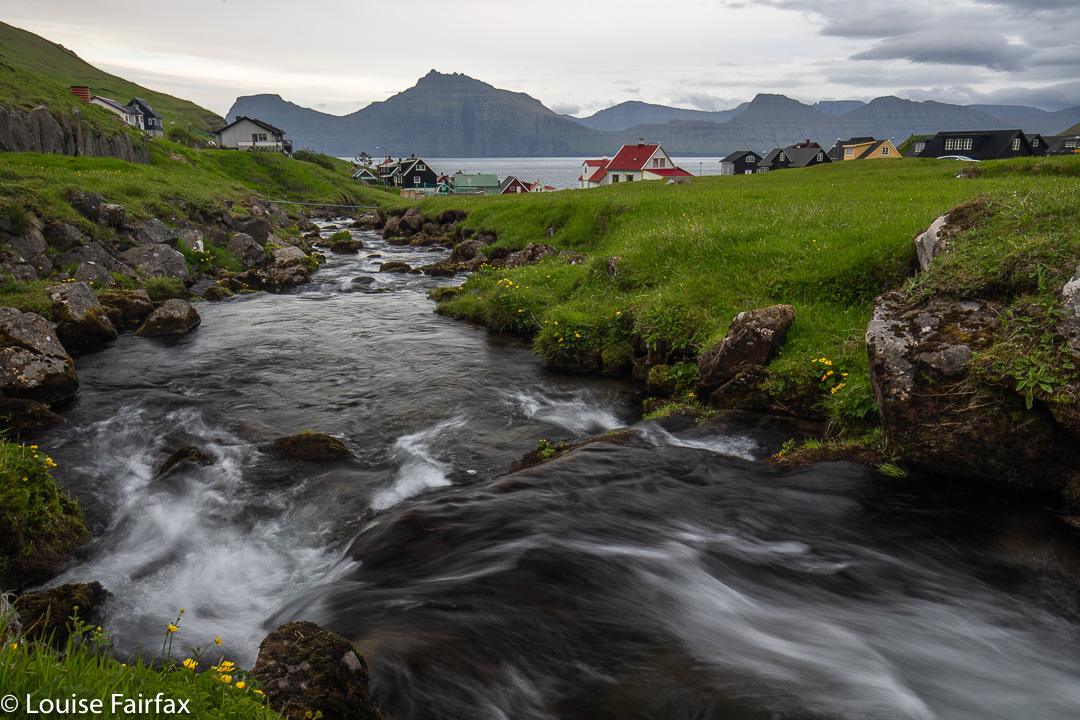
I saw it and fell in love. Did they have a room left? Yes, one. Oh joy. They even had nice food, and friendly staff. This was the note on which to finish my trip. I checked in, and then climbed a mountain up behind the village, from which I had a great view. Boy was it good to have a cooked dinner with real meat and vegetables!!! Trouble is, I broke the world speed-eating record and forgot to chew, so long had it been since I’d eaten real food.
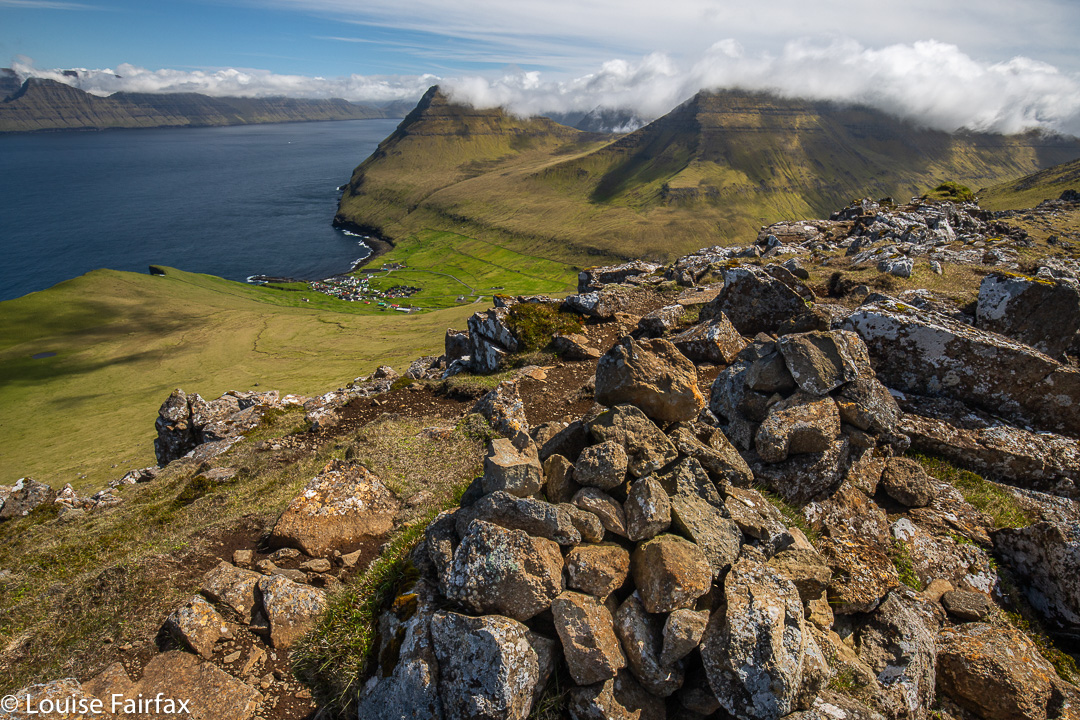
This village – that area – is one of the reasons I do actually want to return to the Faroe Islands. I have a lot of unfinished business (in terms of mountains I want to climb) in that northern region, and the failure to have climbed all that is possible does not sit well with me. I stare at my map and plot … even now.
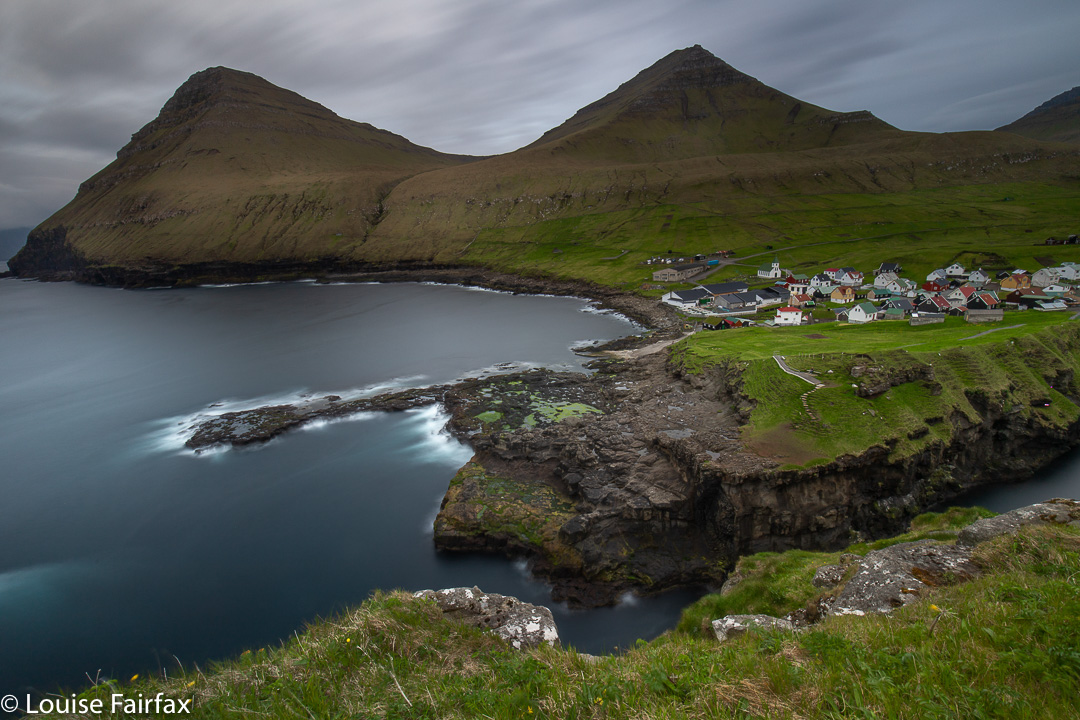
Next morning I drove to the airport to begin the big trek home. The hire car guy – from Justdrive – was so disappointed to hear what I said about the farmers (and angry at the greed) that he didn’t charge me for any of the tunnels to give me a better feeling about the place. His spontaneous generosity worked. Now I have left with an ambrosial taste in my mouth. It’s great to finish a trip on a good note!
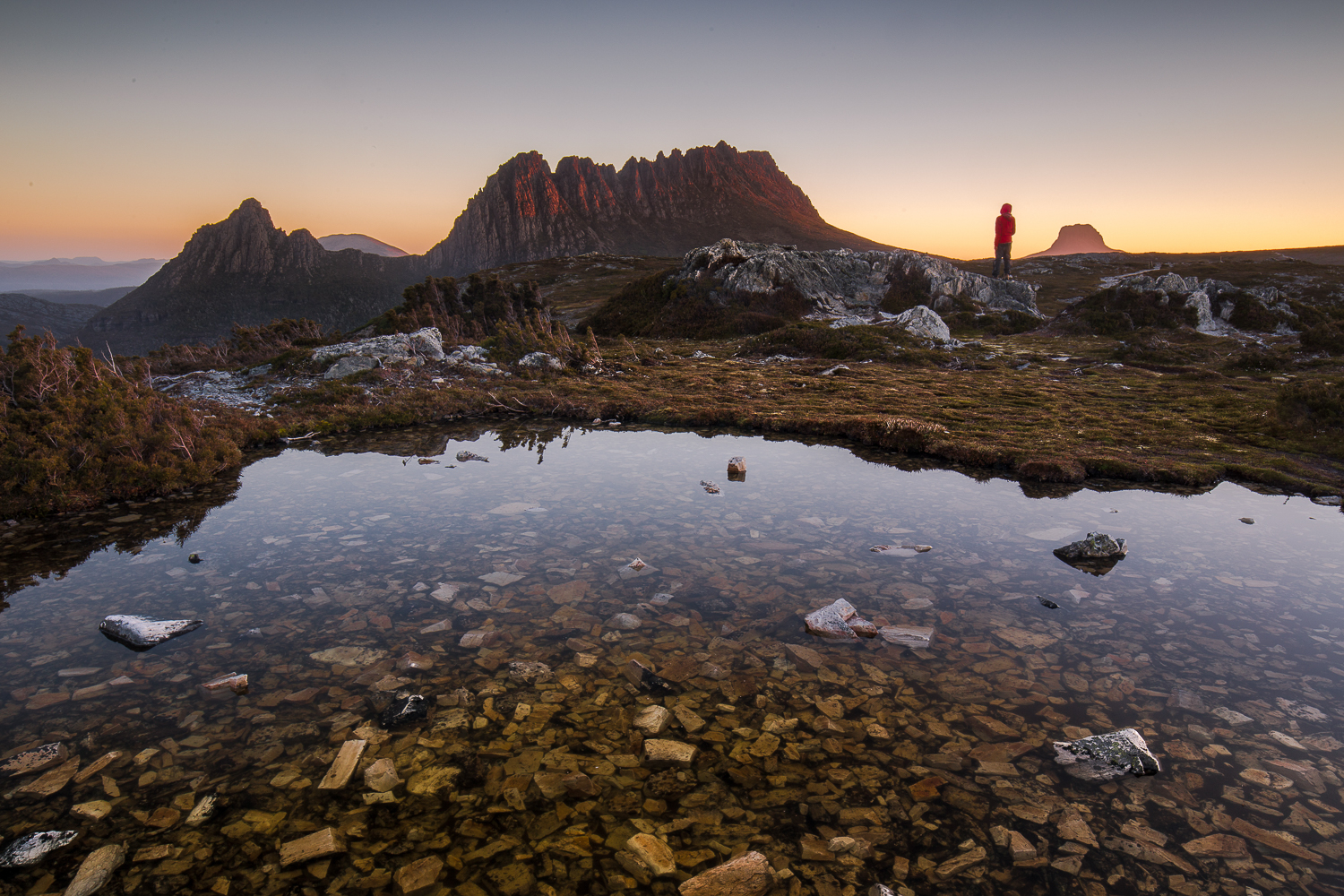
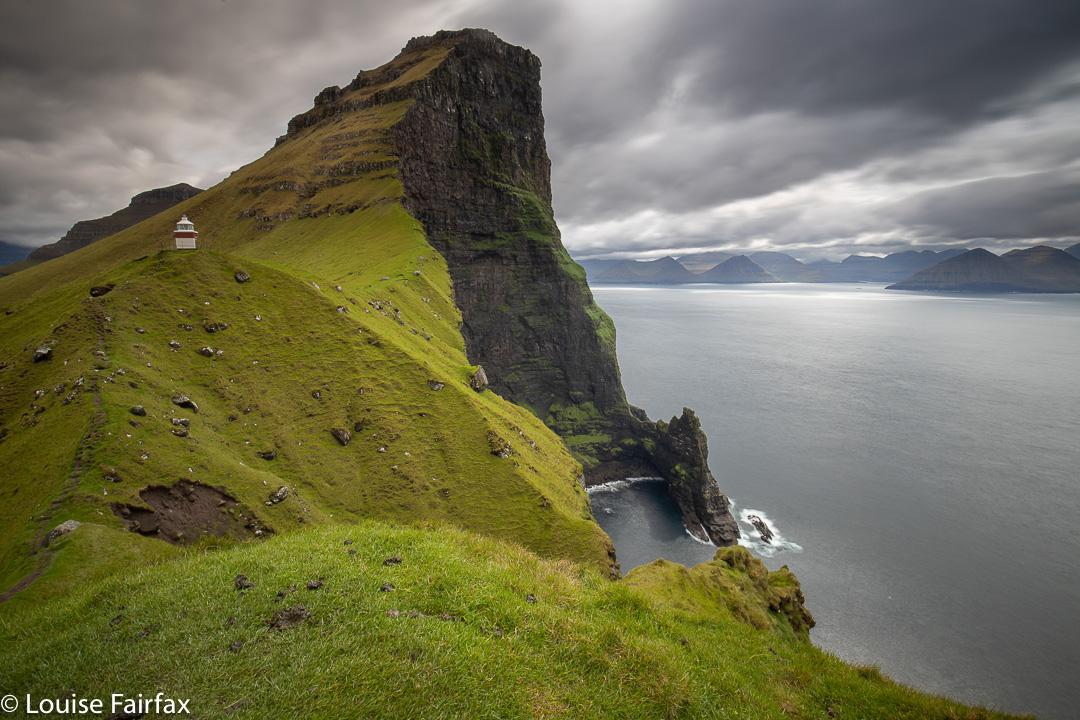
That’s the most interesting review of the Faroe Islands I’ve read. Thank you very much.
Thanks for your great insight, have often wondered about the Faroes. Would love to go but it sounds like they need to sort there tourism industry out a bit before I would go. Great photo’s, thanks.